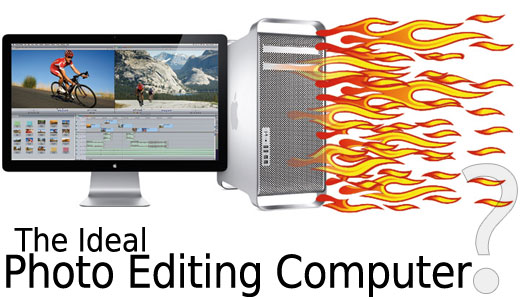How to Build an Amazing Photography Computer
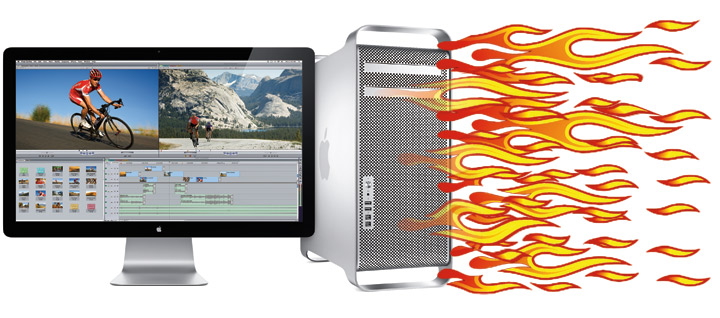
This article is not meant to be the beginning of another Mac vs PC debate. When it comes to photography, the new Mac Pros are awesome machines. If you want the simplest choice and a sleek, high quality computer, just buy a new 8 or 12-Core Mac Pro and be done with it. Financing is available.
But some of us like to have other options. Perhaps you prefer PCs because of familiarity. Maybe you’re tied to a PC because of your other software needs. Perhaps you’re the DIY type and simply prefer doing the work yourself and saving money. Whatever the case may be, if you’re one of those people who like choices, then this article is for you.
Building vs Buying
“But I can’t build a computer!” you might be saying. Yes, you probably can. If you have the skill to build anything recognizable from Legos and enough patience to make it through the second paragraph of this article (look, you did it!), you can build a computer. In fact, it’s simpler than most of the Lego projects that I did as a kid: there are only about 15 pieces to put together, and they each only fit in the correct place, in the correct direction. Generally, the instructions that come with a motherboard will be all you’ll need, but if you’re new to it, here are a couple of other good resources:
- Maximum PC Guide (with photos)
- KitchenTable Computers
- How to Build a Computer, Videos (on YouTube. The first 13 parts are about choosing components, so you can start with 14, probably).
If your Tinker Toys are all broken from high-speed impact with the nearest wall, just buy a Mac or a gaming PC.
Monitors
For the photographer, having a good monitor is more important than having a fast computer. A smokin’ fast computer will get your work done faster, but a good monitor will help it get done BETTER. But this article doesn’t cover monitors. To learn more about monitors for photography, please read my article on the Best Monitors for Photo Editing.
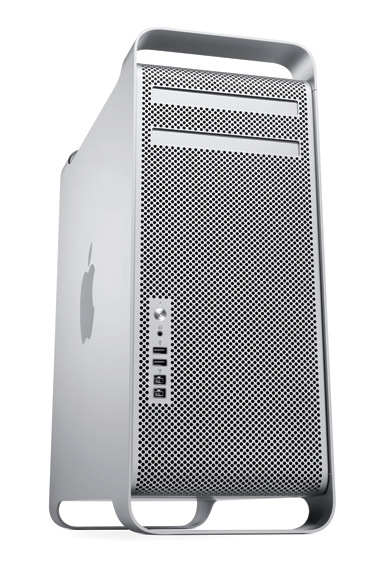
The Mac Competition
Mac sets the bar very high. Their latest and greatest Mac Pro is a 12-Core intel Xeon processor monster, with 6 Gigs of RAM and a 1TB hard drive. I’ll talk about the specifics of this machine in more detail as I proceed, but keep in mind that the Mac has what many of us consider a big downside as well: a price-tag of $4770, without the monitor [$5000 direct from Apple]. If you upgrade the RAM and video display cards (and you should), it will cost even more.
The aim of this article, then, will be putting together a the list of components that will meet or exceed the speed, power, and storage of the Mac Pro for under $4770. In fact, I think that we can do it for much, much less. Throughout this article, I’ll quote prices from Amazon.com, for the simple reason that they actually carry everything (the computer stuff and the photography related stuff) and their prices are usually the same or less than the other big places like NewEgg or ZipZoomFly. You might be able to find individual components for a few dollars less elsewhere, but Amazon is a good place to start. I’ll place a table at the bottom of this article with specifications and component prices.
The Operating System
There isn’t a lot of choice here, but the choices are important. Since we’re talking about building a PC, the obvious choice is Windows, though there are some builds of Linux that are great too, such as the user-friendly Ubuntu, which has the advantage of being free, too. But since we’re probably going to want to run Adobe Photoshop and/or Lightroom native, Windows makes more sense.
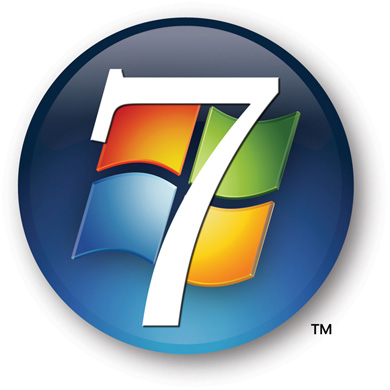
So, which version of Windows? Perhaps the most important choice is that you get the 64-bit version. This is not because 64-bit programs are faster than 32, though that is sometimes the case. The primary reason for using a 64-bit OS is that 32-bit systems are limited to only 4 Gigs of usable RAM, and much of that is not available to your programs (it’s set aside by the OS for other things, like hardware). 64-bit versions of Windows, on the other hand, are practically unlimited when it comes to RAM, so you could theoretically build a machine with 32 or 64 Gigs of RAM and be able to use all of it efficiently.
Since it’s nearly 2011, the obvious choice is Windows 7. It’s not only the current version of Windows, but it has some new features that should be important to photographers, such as color profile management and speedy (and improved over Vista) file search indexing. Windows 7 Professional allows for full systems backups over a network, so if you’re planning on using Windows to do your backups, then you might opt for the Pro version. If you’re planning on using 3rd party software for your backup needs, then Windows 7 Home Premium will be just fine.
The CPUs
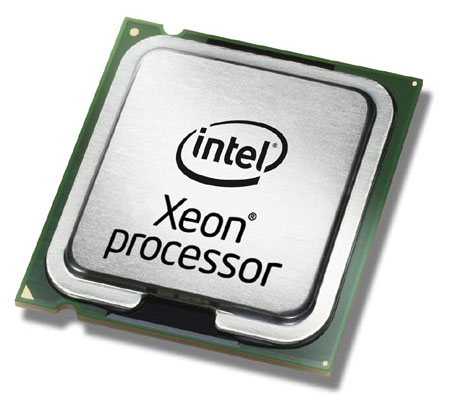
Since the Mac Pro uses two 2.66GHz 6-Core Intel Xeon processors, this seems like a simple place to start with the PC. These CPUs were actually designed as server processors, and they are extremely good at multi-tasking. Cost: about $1005 each. Keep in mind, though, that although the 12-Core system sounds cool, it may not actually give you as much processing speed as an 8-Core system for many tasks, since most programs simply aren’t able to make use of all of those cores, and creating extra threads actually increases overhead data (basically, metadata that’s added to keep the processing threads organized).
The Motherboard
There are several good choices. The EVGA SR-2 is a popular choice, but a bit more expensive than others. The Supermicro X8DAH+-F is another great board, and costs about $500.
RAM
To match the Mac, we need 6G of 1333MHz memory. There aren’t significant differences in performance between brands, so any good brand name RAM should suffice. Corsair, Kingston, OCZ, etc. I’ll say OCZ, just to have something to price. Cost: $131. This is always a good place to improve performance at a relatively low cost. For my own machine, I’d at least double it and go with 12G.
Hard Drives
The stock hard drive configuration of the Mac is one of its biggest weaknesses. It comes with a single, 1TB 7200rpm SATA (3Gb/sec) drive. To simply match this, we could add a Western Digital 1TB Black SATA drive. Cost: $87
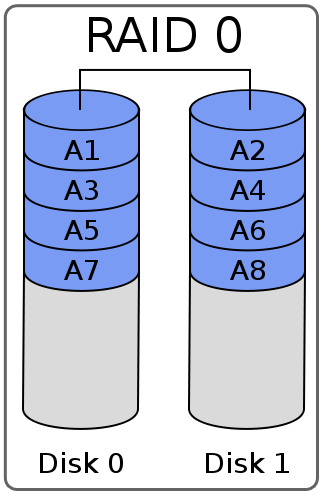
But we can do a lot better… and this is particularly important for those of us using Photoshop. When you work on an image in Photoshop from a DSLR, your file might only be 30Mb or so to begin with. But each additional rastered layer may add an additional 30Mbs to the amount of data PS is using… and many of us work with files with quite a few layers. With 10 layers, your image could be close to 300Mb. And then the history states must be considered. Each time you make a change in the image, it adds a history state, which would then add another 300Mb to the amount of working data. I know many professional re-touchers who set Photoshop to store 100 history states or more. And if you’re using scanned files, or medium or large format digital files, your beginning file might be well over 100Mbs. With all of this data, any computer will run out of RAM to store it all… and Photoshop deals with this by using a “Scratch Disk” on your hard drive, where it temporarily stores the overflow from RAM. When your computer seems really bogged down while you’re working on a big file, usually it is due to the fact that your computer is reading it from the scratch disc instead of RAM, and a hard-drive is incredibly slow in comparison.
There are really two better options. The first is two use two hard-drives in a RAID 0 array. With RAID 0, the two hard drives are essentially treated by the computer as a single drive, so that a single data file would be spread between them and read from both of them. This means that if you have, for example, a 100mb file, 50megs of it might be on drive one, and the other 50 on drive two. The advantage is that when you want to access that file from the discs, you get double the read speed, since it’s coming from two drives, and the drive’s read rate is the bottleneck with a single drive, and when you write the file, it also writes in half the time. This means that you not only double your storage capacity, but you double the performance!
The drawback to using a RAID 0 array is that it also doubles the risk of failure. Since the data is spread between two drives, if either drive fails, all of the data is lost, just as if you were using a single drive that failed. Since there are two drives, though, and twice the number of moving parts, the system is twice as likely to fail. The risk of data-loss can be greatly reduced by using a third drive for long-term storage, or better yet, a network attached storage system (NAS), which I’ll discuss in greater detail later.
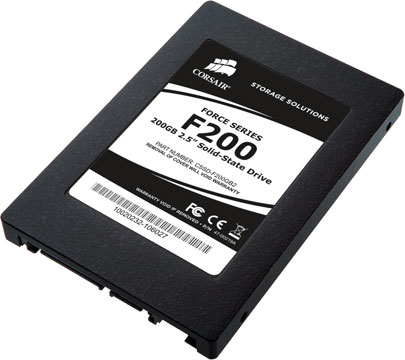
The second option is to use a solid state drive (SSD) instead of a traditional drive with mechanical, spinning plates. Solid state drives use technology similar to USB jump drives or RAM, but they retain their memory when they lose power (unlike RAM). When a hard-drive wants to access a file, it spins its magnetic plates and its read-arm adjusts out to the proper position, like the stylus on a record player turn-table. This process generally takes 7-9 miliseconds. Because SSDs have no moving parts, however, their file access time is almost instantaneous (.07ms), and their read/write (330Mb/s) speeds are much faster than hard drives (typically 160Mb/s). Better still, you can use two SSDs in a RAID 0 array, and double their performance! Since SSDs have no moving parts, they are less likely to fail, which makes it a less risky proposition.
The downside of SSDs is that they’re expensive and low-capacity. You can buy a 1TB hard-drive for $90, whereas a good 60G SSD will cost about $125, making them well over 20x more expensive per Gigabyte. However, when you’re spending several thousands of dollars on a computer, the amount of money involved is still small, and will provide a very substantial increase in performance.
My preferred setup would be 2 small SSDs in a RAID 0 array, with a 1TB HHD for storage. Great SSDs for the purpose (with TRIM, and compatible with RAID, for those keeping track of the details) would be the Corsair Force 60s, at $125 each. The small drives would hold the operating system and program files, and PS scratch disk, which would dramatically improve performance of Photoshop, as well as the computer’s startup time and the time it takes to open a program. Cost, $340.
Graphics Card
The Mac Pro uses an ATI Radeon HD 5770, which is a decent card with a display-port output, which is important with some monitors. For now, we’ll also choose this card. Cost: $150
Case and Power Supply
In the realm of cases, there are hundreds of choices. The only real requirements are that your motherboard will fit inside, and that they have good ventilation. The Coolermaster Cosmos series are stylistically similar to the Mac Pro, so I’ll go with it, but there are probably dozens of better choices for less money. Cost: $198
Powering the dual processors and hard drives will not be an easy task, but a 1000W Silverstone should do the trick! Cost: $184
Cooling
Two processors create quite a bit of heat. If you’re not over-clocking them though, and the case has good circulation (it does), then standard CPU coolers (for the model) will be just fine . Cost: $39 x 2
Optical Drives, Keyboard, Mouse
A Liteon 24x SATA DVD+/-R Drive will perform as well (or better) than the Mac’s optical drive, for $24. A standard Logitech keyboard will cost about $15, and a Microsoft Comfort Mouse, about $13. Total: $52. Obviously, you can spend a lot more money on a keyboard and mouse, but the Logitech has good reviews, and many people will be re-using old equipment anyway… and I’ll talk more about why you shouldn’t spend more on a mouse below.
Since the motherboard we chose has USB ports, Firewire, audio, and ethernet ports, we’re probably all set. Let’s take a look at how the costs pan out:
| Mac Pro 12-Core (stock) | Our Custom-Built PC (Matching / Potential Upgrades) | Our Custom-Built PC (Matching / Potential Upgrades) |
|---|---|---|
| 2 x Intel Xeon 2.66GHz CPUs | 2 x Intel Xeon 2.66GHz CPUs | $1005 each |
| Motherboard: SUPERMICRO X8DAH+-F | $500 | |
| 6G 1333MHz RAM | 6G 1333MHz OCZ RAM / 12G | $131 / $262 |
| 1TB 7200rpm SATA Hard Drive | Western Digital 1TB Black SATA / 1TB + 2x SSD RAID array | $87 / $340 |
| Operating System: Windows 7 Home Premium / Professional | $122 / $157 | |
| ATI Radeon HD 5770 | Display Card: ATI Radeon HD 5770 | $150 |
| Case: Coolermaster Cosmos | $198 | |
| Power Supply: 1000W Silverstone | $184 | |
| CPU Fans: Thermaltake | $39 x 2 | |
| LiteOn SATA DVDr Drive, Keyboard, Mouse | $52 | |
| $4770 | :TOTAL COST: | $3512 / $3931 |
Even without trying to cut corners (using an 800W power supply would have been fine, and we could have used a $100 case, etc), the PC with the same level of performance as the Mac costs over $1250 less than the Mac from Amazon.com, about $1500 less than buying from Apple. Add in the upgrades that I mentioned, and you get a computer that will significantly outperform the Mac and still cost $800 / $1000 less, depending on where you purchase it.
Conclusion: Save at least $1000, get better performance, and buy a first-rate monitor. After all, with an awesome computer, your work will be done faster, but with an top-notch monitor, your work may be done BETTER. That’s up to you, of course… and which one is really more important? [For more information on the best monitors, see my article on Photo editing monitors]
Back To Reality : Better Performance, Lower Cost
We can probably all agree that it sounds really damn cool to have a 12-core computer. As I mentioned before, though, all of those cores don’t really translate into better performance. When you’re doing photography work, it is not very important to have a dozen data-threads going. In fact, most software simply doesn’t have multi-processor support that is sophisticated enough to make use of 12-cores, and furthermore, threading out data to multiple processors creates some extra data (a minimal amount), which can slow things down in certain circumstances.
Consequently, tests have shown that in Photoshop and Lightroom, there’s virtually no gain when using a 12-Core processor vs an 8-Core. When it comes to 3D rendering, the 12 core does a bit better, but not dramatically. Additional tests have shown that (largely due to GPU issues) with Adobe Premier, the new 12-Core is slower than virtually every 8-Core processor tested (On Adobe Forums). In most real-world cases, a single, faster 6-Core CPU will perform better than a 12-Core. If you’re still not convinced, I suggest taking a look at the tests by Diglloyd.
What’s REALLY Important
Since Photoshop and Lightroom work with large amounts of data at once, it’s important to have a lot of RAM. You can certainly get by with 4-6G for casual usage, but for a speed machine, you’ll really want as much as you can afford. Many high-end systems use 32G. Consider the photograph below. This is an 80 megapixel panorama, with an open size in Photoshop of 610 Mb, single layer. With only 4 Gigs of system RAM only about 5 history states would be stored before the scratch-disk would start coming into play.
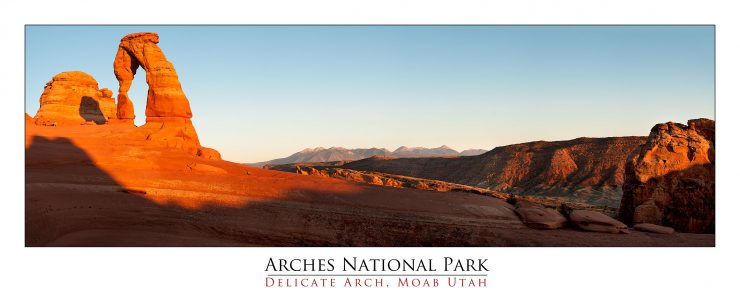
Fast storage is also important. Unlike many programs which open from the hard-drive and then run from RAM, Photoshop and Lightroom access the hard-drive very frequently. Photoshop makes use of its scratch disks with large files, Lightroom reads and writes thumbnails, metadata, and database information, and both programs need to open large files from and save files to the hard drives. This makes SSDs and RAID arrays very important in getting the best performance.
For CPU intensive jobs, faster clock speeds are more important than many cores when Photoshop is concerned.
The graphics card isn’t as important for photography as it is for video and 3D, but there are still some important considerations. In order to get the most data from your display to your monitor, you’ll need to use a “Displayport” output rather than the standard DVi or RGB. Monitors that support 1billion colors or more (10-bit LUTs) will only display that information through the displayport; through the RGB they are cut down to 16 million. However… since a lot of DSLRs also shoot HD video now, and the graphics adapters are important for video editing, you might want to make further upgrades based on your needs there.
Two Systems That Are Worth Their Price
| Fast CPU System | Component Price | Under $1500 System | Component Price | |
|---|---|---|---|---|
| CPU | Intel Core i7 980X 3.33GHz (6-Core) | $999 | Intel Core i7 950 (4-Core) / Core i5 760 | $295 / $205 |
| Motherboard | Gigabyte GA-X58A-UD5 | $275 | Gigabyte GA-X58A-UD3R | $189 |
| RAM | Corsair 16 GB 1333 MHz DDR3 | 2 x $105 | Corsair 16 GB 1333 MHz DDR3 | 2 x $105 |
| Hard Discs | 2x Corsair Force 60G SSD 2x 1TB Western Digital HDD | $125 Each $89 Each | 2x Corsair Force 60G SSD 1x 1TB Western Digital HDD | $125 $89 |
| Graphics Card | ATI Radeon HD 5770 | $150 | ATI Radeon HD 5770 | $150 |
| Case / Power Supply | CoolerMaster CM 690 II / Corsair CMPSU-850TX | $85 $127 | CoolerMaster CM 690 II / Corsair 750W | $85 $105 |
| Optical Drives | LG 10x Blu-Ray Writer (16x DVDr) | $111 | Lite-On LightScribe 24X SATA DVD+/-RW Dual Layer Drive | $24 |
| OS, Mouse, Keyboard | Logitech Keyboard Microsoft Mouse | $15 $13 | Logitech Keyboard Microsoft Mouse | $15 $13 |
| CPU Cooling | Corsair Cooling Hydro Series H50 | $78 | OEM Fan | Included |
| Grand Total = | ---> | $2491 | ---> | $1300 / $1210 |
.
Single CPU System Details
This system uses a 6-core processor similar to those found in the 12-core Mac. It is, however, faster than the Xeons… and can be made even faster if you’re willing to over-clock it. Overclocked to 4GHz, it beats the 12-core hands down in all but the most specialized multi-threading tests… and certainly with Photoshop, Lightroom, and Adobe Premier. And because the system only uses one 6-Core processor, it’s immediately $1000 cheaper than the 12-core system.
Because of the RAID setup of the hard-drives, it will dramatically out-perform the Mac when it comes to anything involving reading from or writing to the hard drives. As explained previously, this is common during Photoshop use, particularly with large files. Furthermore, I’ve added a second 1TB HDD so that they can be used in a RAID array. If you need the extra space for your Lightroom database or Bridge thumbnails and don’t want to keep them on your SSDs, having two HDDs in RAID 0 will improve performance of those programs. If you want to use the TB for storage, then I’d recommend setting them up as mirrored RAID drives so that you always have a backup of your work. (If using the two drives as RAID 0, then I recommend continuous backup to a NAS system, detailed below)
Since the case doesn’t have to accommodate a large, dual CPU motherboard, we can go with a high-quality mid-tower instead, and power the board with an 800W supply instead. Both are less expensive, and both are still excellent quality.
For Photography, the 5770 graphics card is overkill, but will be handy for watching high-definition video and doing occasional video editing.
Mac, for some reason, will not install Blu-ray drives in their machines… but that doesn’t mean that we need to limit ourselves. This may not be an important feature to everyone, so feel free to replace this drive with the one mentioned above ($25).
The final item on the list is a simple water cooler for the CPU, which will allow for the overclocking of the i7 processor to 4GHz, if desired. If you decide to overclock, you might also consider an extra RAM cooling fan or two.
All of these components together give you a machine that, while still an expensive computer for the average user, will out perform the $5000 Mac beast… at half the cost.
FINAL COST: $2491
Still, not many of us are ready to spend $2500 on a computer, and for most of us, it would not even be beneficial. A $2500 computer does not perform twice as well as a $1200 one. Most of the time, their performance will be virtually identical; it’s only during heavy processing loads that the differences will emerge… and it might be closer to a 20% difference, or less.
A More Affordable Machine
As you can see with the $2500 computer, about half of the cost comes with just the motherboard and processor. This is inevitable when you’re using the very latest processor. However, if you’re willing to sacrifice a little performance (certainly not proportional to the price difference), then you can save a lot of money and still end up with a computer that will blow away most of the competition.
There are a couple of good ways to go. First, you could switch to a slightly less extreme 4-core i7 CPU. The i7 950 costs a mere $300 in comparison… a full $700 less than the 6-Core, but with a performance drop of only 20-25%, on average… and that can be improved by overclocking, if necessary. However, since the main performance slowdowns of a Photoshop machine have little to do with CPU speed and a lot to do with RAM and disc access, this won’t actually convert to 20% slower performance; most of the time, they’ll be identical. Only under full CPU load will the 4-Core machine be any slower, and there it’s not much. And keep in mind that even though this CPU is a little slower than the Intel 6-Core, it’s still faster than the 6-Core AMD Phenom IIs.
If you’re still looking to cut cost but want the smallest impact in Photoshop, the best place is still with the CPU. If you take an Intel i5 760 instead of the i7 950, the processing speed difference will be minimal (a heavy duty, 15.5 second CPU intensive operation might take 17 seconds), and you’ll save about $100.
As for the motherboard, there is not a lot of money to be saved. The Gigabyte UD3R is a little less and just as good for the 950 CPU. An equally good choice would be the MSI X58 Pro-E, at about $179, saving us another $100.
Now… as much as I hate to do it, to cut the price of the computer down to my target, we’ll have to leave out one of each pair of the hard drives. This will slow down the system, but running Photoshop on an SSD will still be such an improvement over a standard hard drive, you’ll still be getting great performance. However, if you have a little extra money to spare, I’d keep the second SSD to be able to run a RAID array, as suggested above.
Beyond that, we could save a little here and there, but not gigantic amounts. We could easily drop down to the Corsair 750W power supply and save $20. Could drop the water cooler and use the stock fan, which would save $78, and opt for a DVD-R drive instead of the blu-ray burner, saving another almost $100, and it would be relatively easy to find a cheaper case (if you don’t have a case to re-use). This would get us down pretty close to the $1200 mark.
Conclusions
These are just a few of the options available, and many many others exist. There are those who will prefer to save money by using AMD processors or Velociraptor HDDs. The combinations are truly endless, and there is no definitive answer as to what combination will give you the best performance for the least money. With a little careful planning and research, though, you’ll be able to save yourself thousands of dollars on computer equipment and end up with a machine that will run circles around anything you can buy at your local BestBuy. Good luck!

